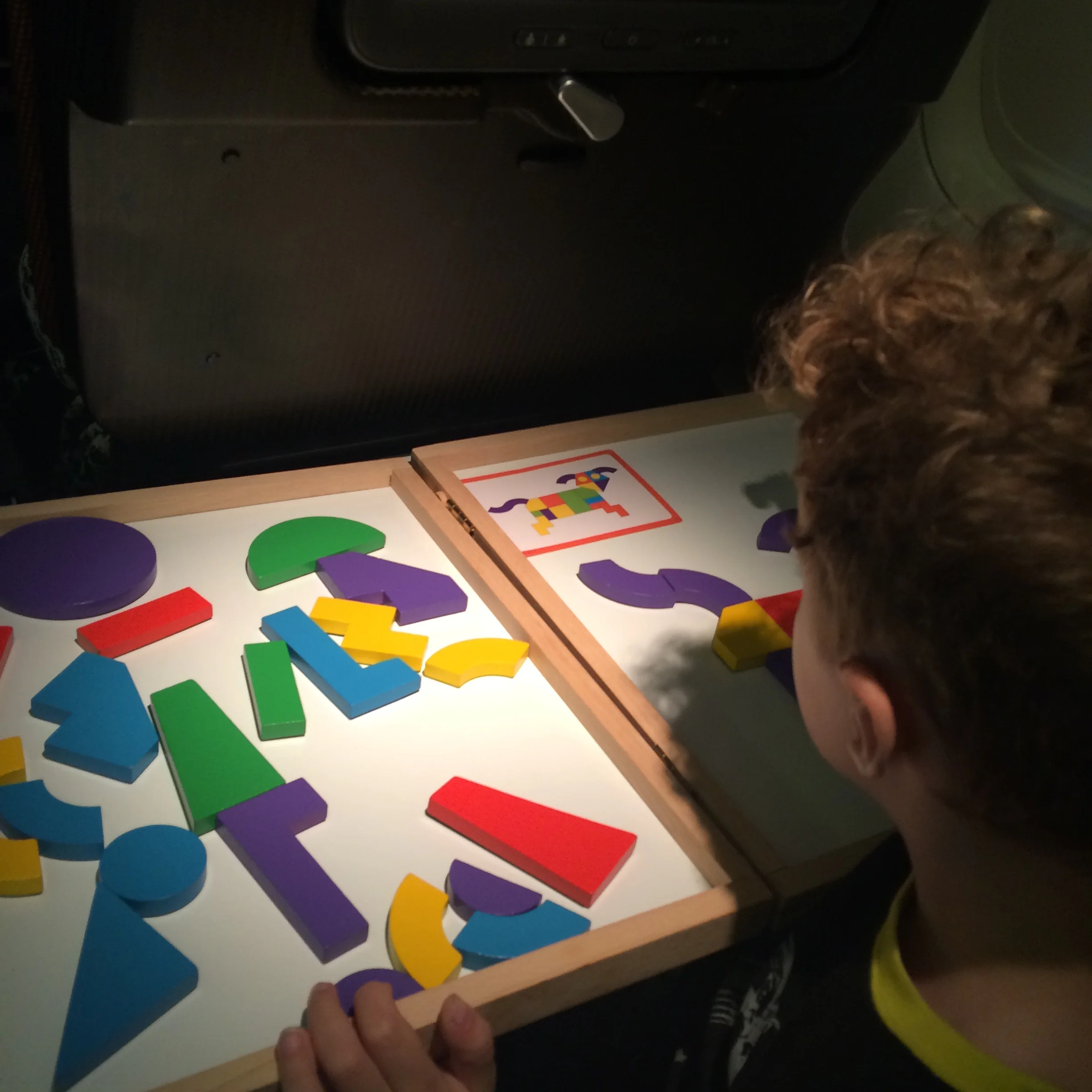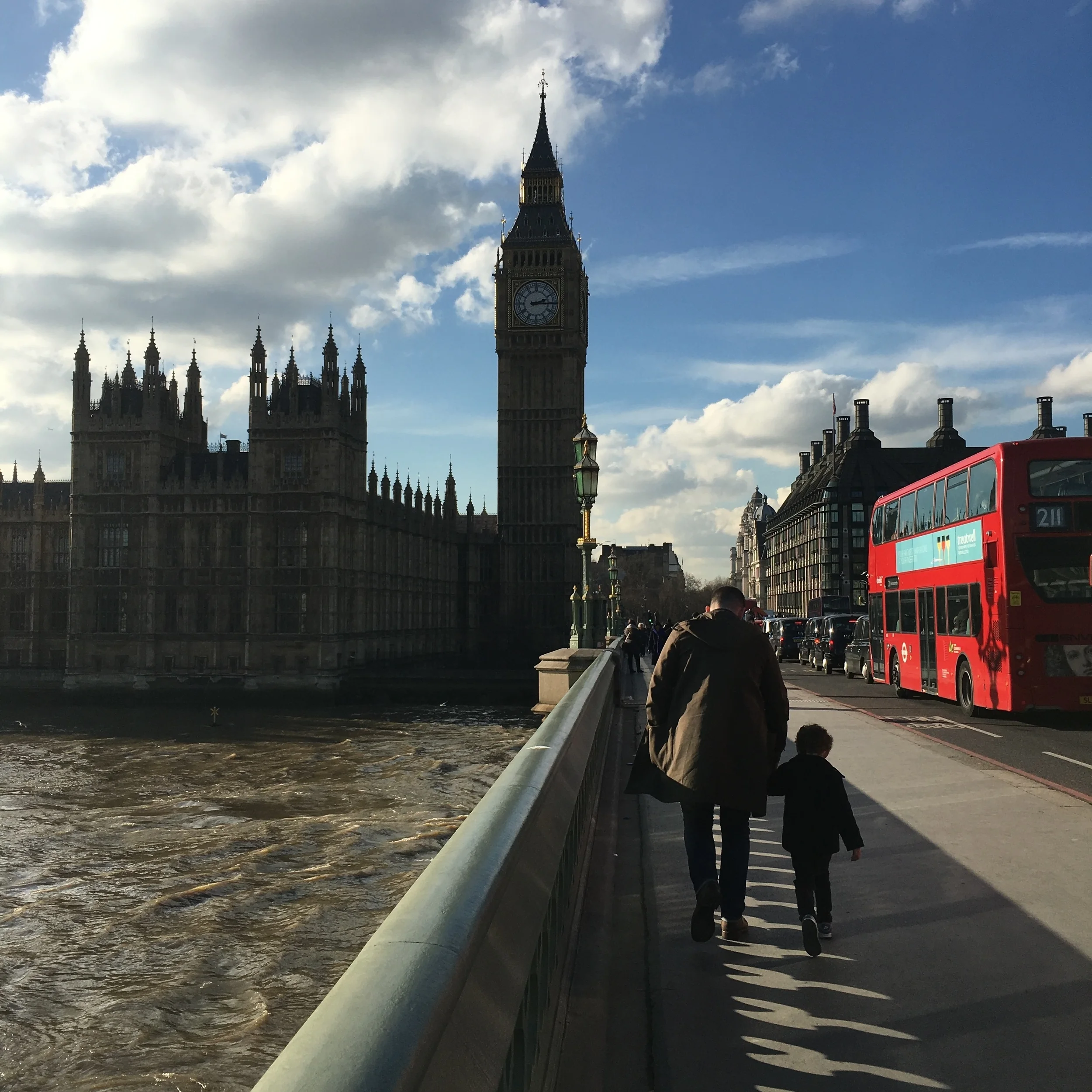11 Tips for Long Flights with Little Kids
When our son was 20 months old, we logged our first international family trip to see Mr. Good's relatives in Australia. We flew on a Chinese airline and had a layover in Shanghai; it was about a 24 hour flight altogether. Once we got there, we had several small flights to places like Brisbane and Tasmania, so by the time we got home, we felt like travel pros. If you can handle flying across the world with a toddler, you can probably handle anything. The boy was 3 on our second trip to Aus, and we flew through LA, and it was a million times easier. We'll be going again in 2017, and Little Man is already complaining about how long the flight will be, haha - the kid has no idea how fortunate he is to have such concerns. While I don't claim to be an expert, and we only have one kid, here are some things I've learned about overseas travel with little people:
1. Stay positive for kids, but in your mind, prepare for misery. Babies and kids are very receptive and will pick up on any anxiety you may have, so in the weeks before your trip, build up the excitement - you are going on an adventure, after all. Once you are on the plane, do your best to keep a cheery attitude, but be prepared for your own marathon of mental exhaustion. There's no sugar coating it - chances are you won't get any real sleep, you won't have any personal space (but what's new), and you'll be cleaning up bodily fluids for a good portion of the trip. Hopefully, you are flying with a supportive partner who will take turns so you can get a break.
2. Get your paperwork in order and keep it handy. Have a place in your carry-on that is easily accessible for visas, passports, birth certificates (if needed), and copies of your itinerary. When you're carrying a small child along with your luggage, these are the last things you will want to be fishing for.
3. Decide between laps, car seats, and harnesses. On most airlines, children under age 2 can fly for free, since they can stay on a parent's lap. We opted for this on our first flight to Aus, and while it sounds crazy to go on such a long flight with a toddler on your lap, I honestly don't think our son would have stayed in his own seat at that age. The airline gave us a seat belt for Little Man that attached to my belt. Thankfully we had bulkhead seats and we survived, but I can see how other parents would want to spring for the additional seat. Since then, we prefer to keep him in a car seat on flights. If you are bringing a car seat onto the plane, it must be forward-facing. Be sure to check your airline's car seat requirements in advance. The FAA has also approved the CARES harness for children 22-44 lbs., but we have no experience with those.
4. Strollers and carriers. Packing for a long trip with littles can sometimes feel like you are moving a small army, and when you add the carseat and baby gear to your luggage, the thought of bringing a stroller might seem like overkill. Carriers are an obvious way to move little ones easily, but for older toddlers, chances are you will want an umbrella stroller for both getting around the airport and for long walks at your destination. I wore my 20-month-old in the Ergo when we went to Australia, and that was hard on my back at times. We rented a stroller at one point during that trip, but I regretted not bringing our own. Whether you check the stroller with your luggage or at the gate, you should put it in a stroller bag - they can get banged up and even damaged.
5. Load up on liquids and snacks. You are allowed to bring a "reasonable" amount of drinks and food for your child, including breastmilk and formula for babies, although once your child gets to age 2, some airlines are stricter about letting full sippy cups through the security check. Milk, formula, and breastmilk should be stored in a small refrigerated bag with ice packs, and bring extra powdered milk or formula to mix with bottled water for long flights. I had a hard time finding milk on our layover in Shanghai, and made the mistake of giving Little Man a bottled "milk drink" that did not go over well with his stomach. Bring more snacks than you think you will need, and introduce them to your child incrementally. Even if you are the world's crunchiest parents, this is the time to allow some junk food. Annie's Organic gummy fruit snacks and Chex-mix style snacks, string cheese, and fruit pouches are particularly good for traveling with toddlers. We even allowed lollipops on a recent flight to the UK (hey, if it works, it works). Of course, you shouldn't introduce any new foods to your children while traveling in case of allergic reactions.
6. Keep essentials in the clear. I like to pack Ziplocs for each of us filled with our own travel-size toiletries and medication and keep them in my handbag that goes under the seat. For myself and Mr. Good, it's usually Ibuprofren, earplugs, eye masks, eye drops, Chapstick, Tums, hand sanitizer, and any prescription medication; and for Little Man it's usually chewable Children's Tylenol and Benadryl, lotion, and Band-Aids.
7. Diapers, pull-ups, and staying comfortable. The changing tables in most airline bathrooms are small and might require awkward posturing for larger parents, but overall adequate. Bring more diapers than you think you will need - tuck them into every cranny of your carry-on. Even if your toddler is toilet-trained, have them wear a pull-up just in case the plane is delayed on the tarmac. Bring a full pack of wipes, and a plastic bag with a few extra changes of clothes (don't forget socks) for your child and at least one change of clothes for yourself. Keep a soft blanket handy - I always used the Aden & Anais blankets, which double as nursing covers, changing table covers, and wipe up puke fairly quickly.
8. Pre-boarding. Potty-trained children should go to the bathroom as close to boarding as possible. Buy bottled water, juice, whatever you might need. Have toddlers and young children run around and stretch their legs. Most airlines will let families with young children board early, but some parents will prefer to wait to board until the last minute so their wildlings can continue burning off any pent-up energy.
9. Manage entertainment to avoid meltdowns. Before you pull out the electronic devices, try to exhaust the analog options first. As soon as you are seated, let your child explore the plane itself - look out the window, let them push the buttons (except for the call button, of course). At the beginning of the flight, break out new sticker books, picture books, magnetic puzzles, coloring books, etc. Any toys should be small and soft, in the event that they get chucked down the aisles. Once boredom or crankiness sets in, then give way to the gadgets. (Of course this won't work with older kids, they will likely plug in and tune out the minute they sit down.) We introduced our son to the iPad at 20 months on our trip to Australia, and I feel no guilt about it. By doing so, we kept him entertained for solid lengths of time and he learned how to trace letters with his finger. We also brought a portable DVD with several Disney movies, but this proved less useful as he didn't have the attention span for movies at that age. Remember to pack kids' headphones as well as chargers. And if the kids do "chuck a tanty" (that's Australian for throw a tantrum), try calming them with music, reassuring cuddles, or a distracting walk down the aisle. Remind yourself you'll never see these people again, and everyone was a crying baby once.
10. Be prepared for jet lag. Hopefully you and your littles don't have anything too important to do upon landing in your destination other than checking into your hotel and getting adjusted to the local time. Expect that you yourself will be exhausted, and will probably need a heavy-duty nap. Again, hopefully you are traveling with a supportive partner and you can take turns catching up on shut-eye. Chances are your child will wake up that first night or two. Try to keep the lights off and the activity levels low. During the day, wake up and get moving as early as possible, and everyone should be adjusted fairly soon. The return trip is usually a harder adjustment - don't be surprised if it takes two weeks for your littles to return to a normal schedule.
11. Above all, keep your cool. During the flight and throughout your trip, patience and compassion will go a long way to making things go more smoothly for everyone. Ask your partner for a break when you need one, be sure to make time for yourself, and have that glass of wine (or your beverage of choice) when you can. Remember, it's your vacation too.









